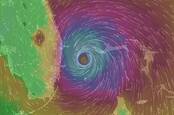This article is more than 1 year old
IBM unleashes AI on two space problems: How to map all the junk in Earth's orbit, and how to put more up there
Open-source projects aim to give researchers, startups a helping hand
IBM has published two open-source artificial intelligence projects it hopes will help astronomers better deal with space junk – and encourage startups to circle Earth with swarms of CubeSats.
The Space Situational Awareness (SSA) project looks at anthropogenic space objects (ASOs), the fancy term for stuff humans have lobbed into orbit. IBM teamed up with Moriba Jah, an associate professor of aerospace engineering at the University of Texas, to develop two models to predict the orbits of ASOs.
The first one, described as a physics-based system, models how these objects' orbits are affected by Earth over time. Jah said the ASOs move in space like ships in the sea, though rather than ocean currents, it’s the effects of gravity that guide the objects, he told The Register. The second model uses machine-learning algorithms to predict the errors in the orbital calculations produced by the physics-based system, which are fed back in to refine the latter model.
The overall goal is to forecast the orbits of ASOs, and work out whether two bits of debris are at risk of colliding with each other.

Here comes an AI that can predict hurricane strength. Don't worry, NASA made it so it probably actually works
READ MOREJah told us the models in the SSA project are not ready to be put in production yet, though they serve as a demonstration of what may be possible in the future. He ultimately wants to build an ASO forecasting tool that functions like a web portal. “Astronomers can search for specific objects and upload the longitudinal and latitudinal data for what they’re interested in," he said. "That is then used to query a knowledge graph, and returns a movie or visualisation of some sort that shows how that object is predicted to move in the future.”
To build that, however, he needs to simulate all the ASOs in a single model he calls the Space Domain Digital Twin. Jah hopes IBM’s open source SSA project will encourage astronomers to get involved and share any data that describes these objects in more detail so they can be better modeled. “There’s no taxonomy on ASOs,” he said. “There’s all sorts of things up there, like gloves from astronauts or nuts and bolts from satellites. But we have no representative models that take into account their various properties like shape or material.”
The software is fairly computationally intensive. Engineers at IBM’s Space Tech Hub employed one of Big Blue’s bare-metal cloud servers, containing 16 Intel Xeon processor cores, 120GB of RAM, and two Nvidia Tesla V100 GPUs, each with 16GB of RAM, to train and run their models.
Now let's put more up there!
Finally, the KubeSat project is a set of tools to simulate the behavior of swarms of tiny CubeSats and how satellites within a constellation can communicate with one another.
By mapping their orbits, the software can automatically place restraints on how the miniature satellites send data to each other and to ground control. The KubeSat framework also contains code to build a messaging service as a form of communication between the satellites that can be optimized with reinforcement learning algorithms.
“Innovation in space industry can benefit from this framework,” IBM said in a statement.
“Reinforcement learning models for specific use cases can be built with this framework as the underlying software for many satellite groups. Collaboration and communications between those satellite swarms can be autonomous, allowing for swarms to integrate or separate as needed. This modular swarm creation is a key component of our software, allowing satellites utilizing our software to have the maximum impact.”
The KubeSat framework was developed by engineers at Big Blue with students at Stanford university. IBM had nothing more to add when we got in touch with it. ®
